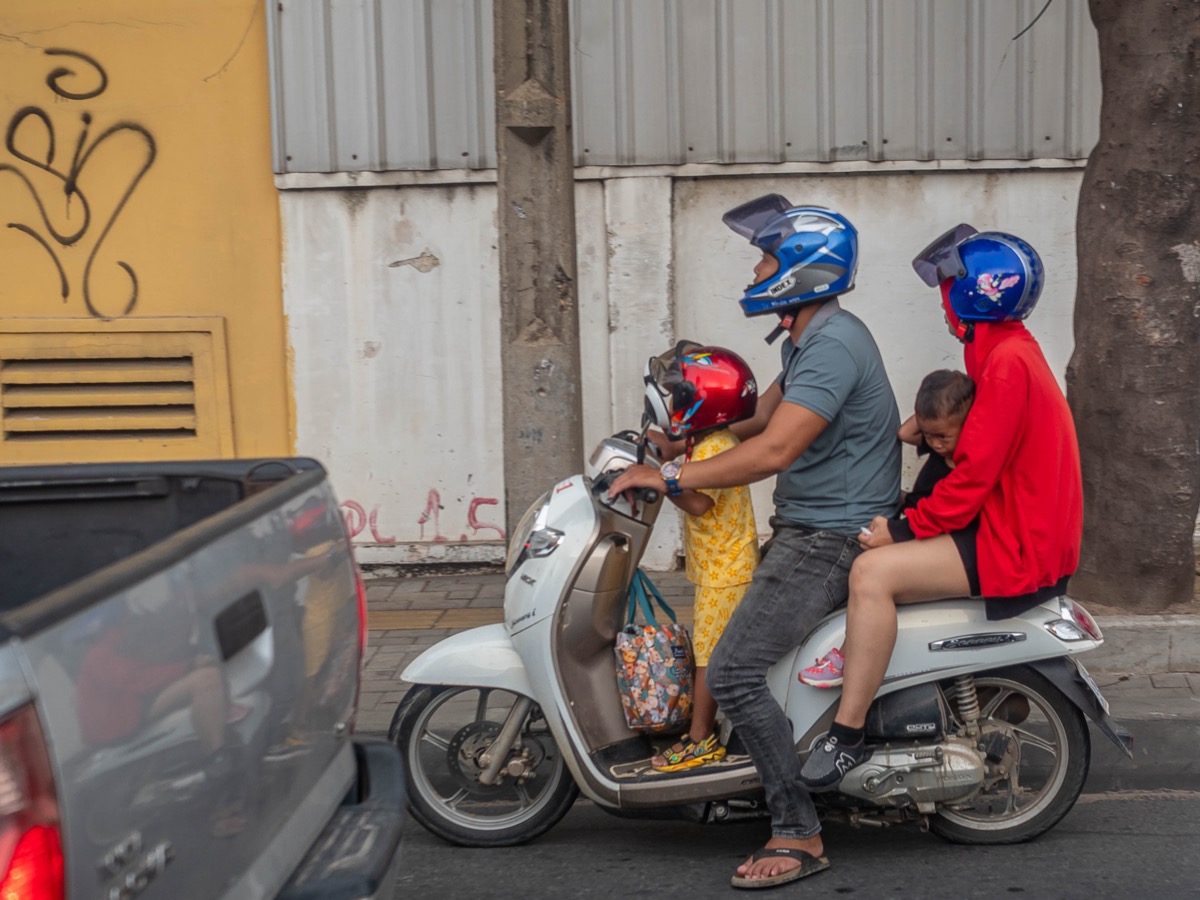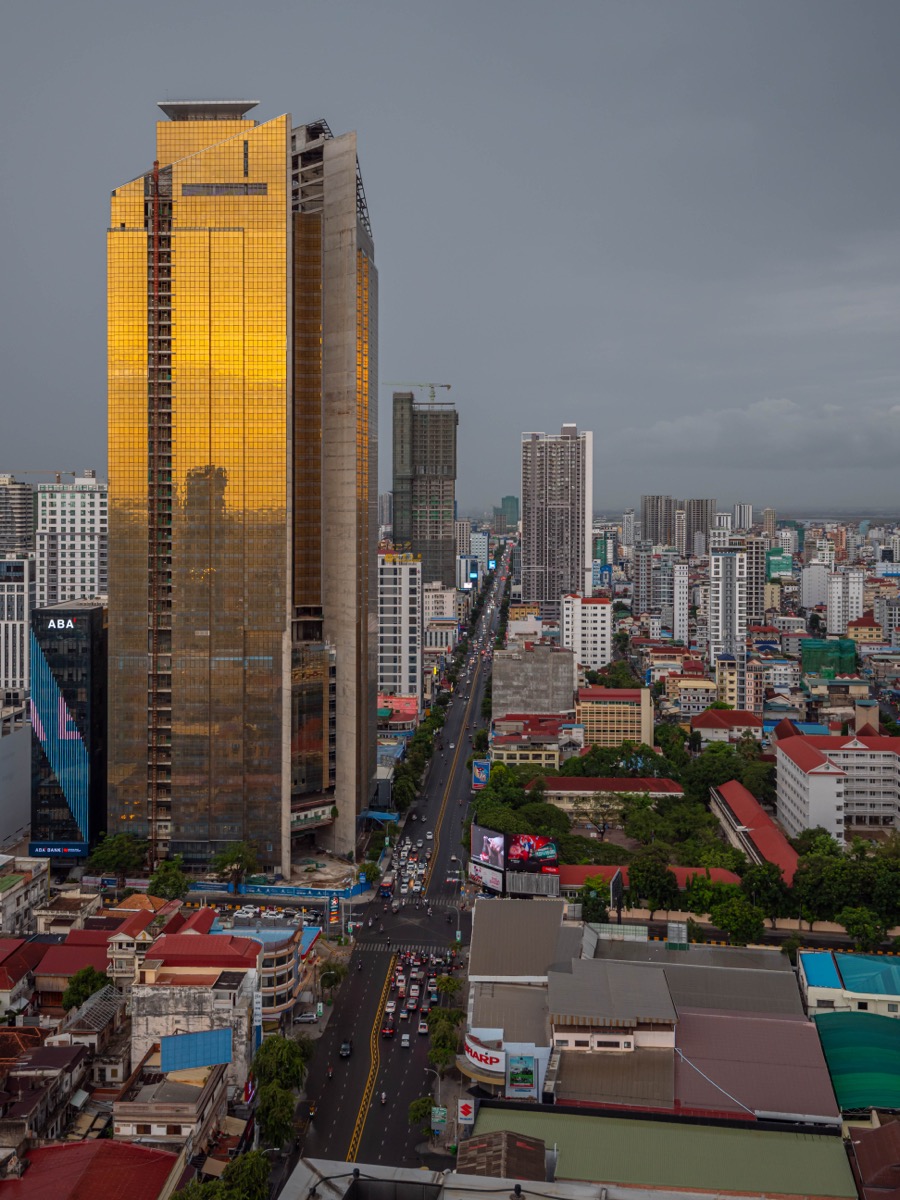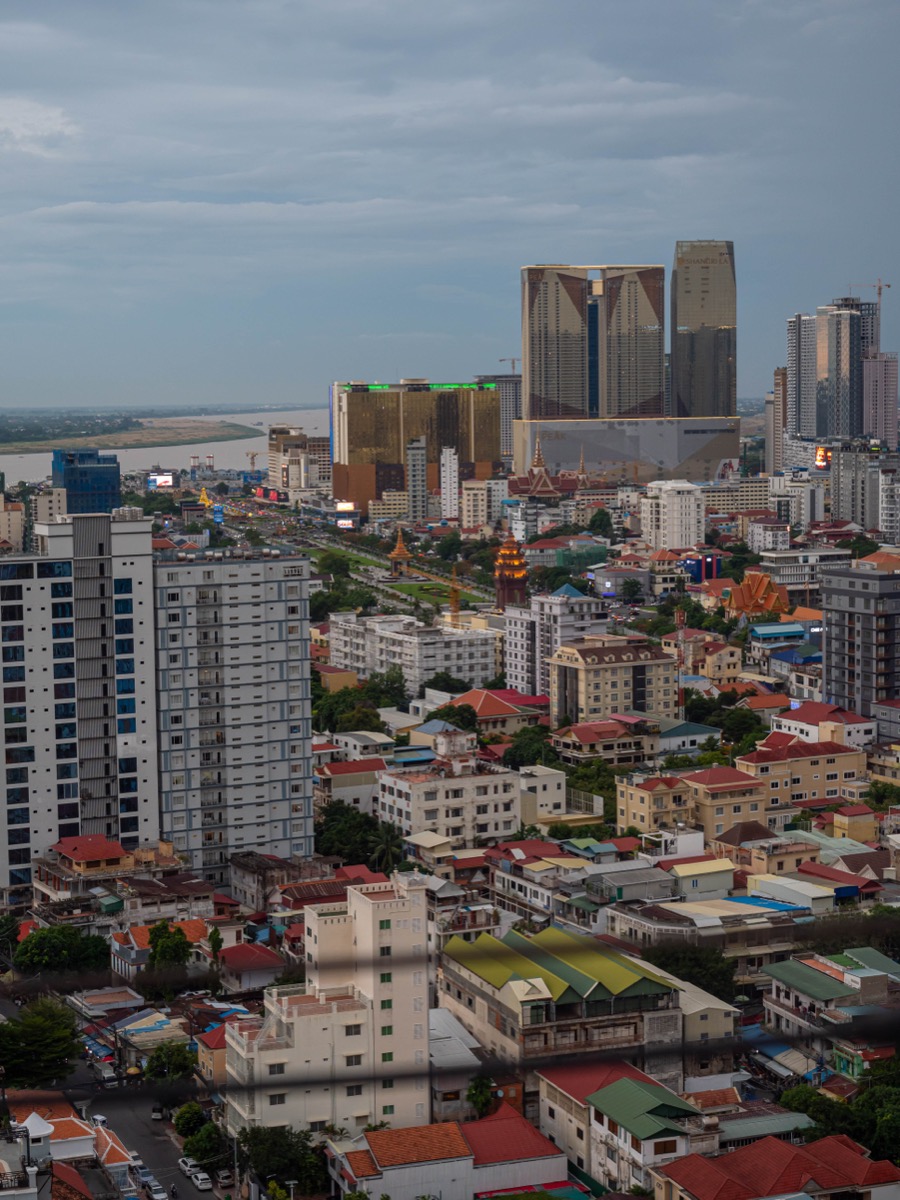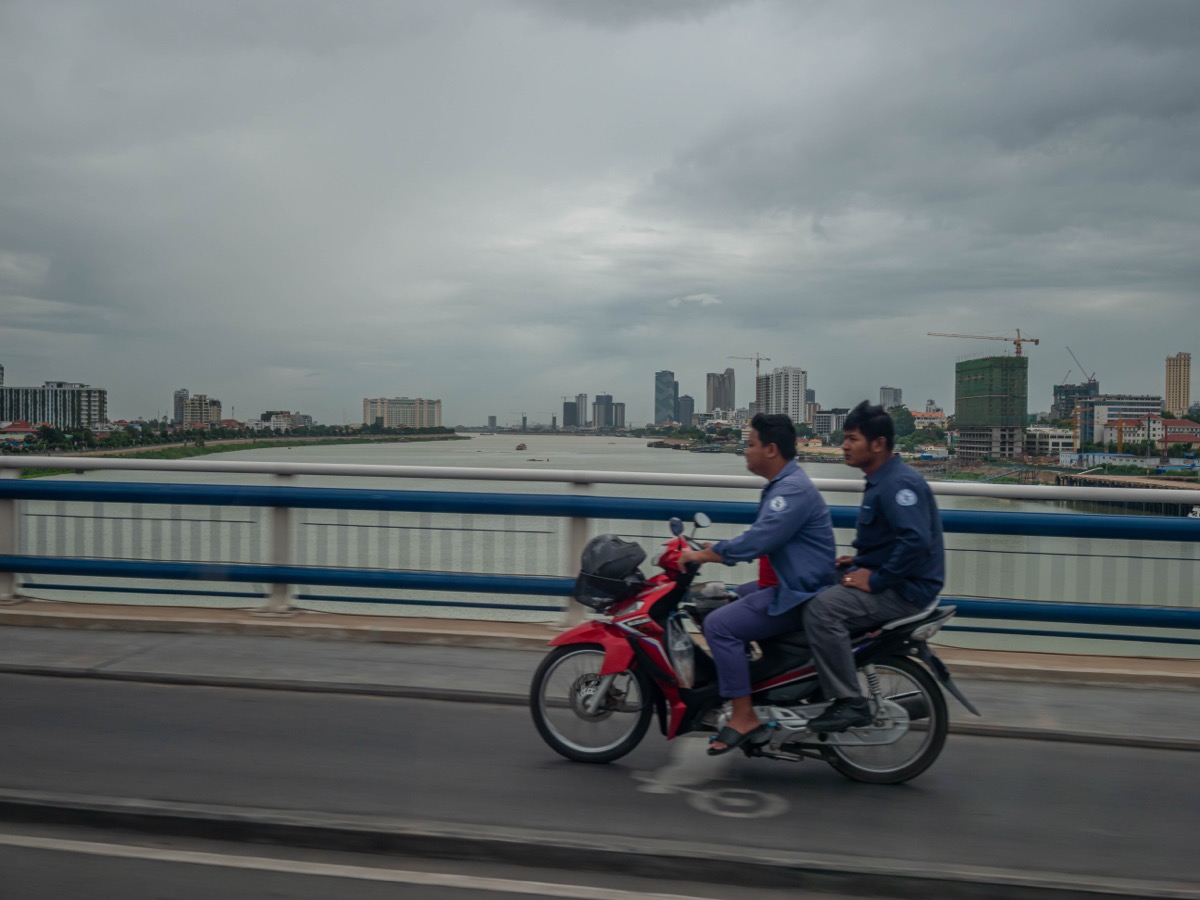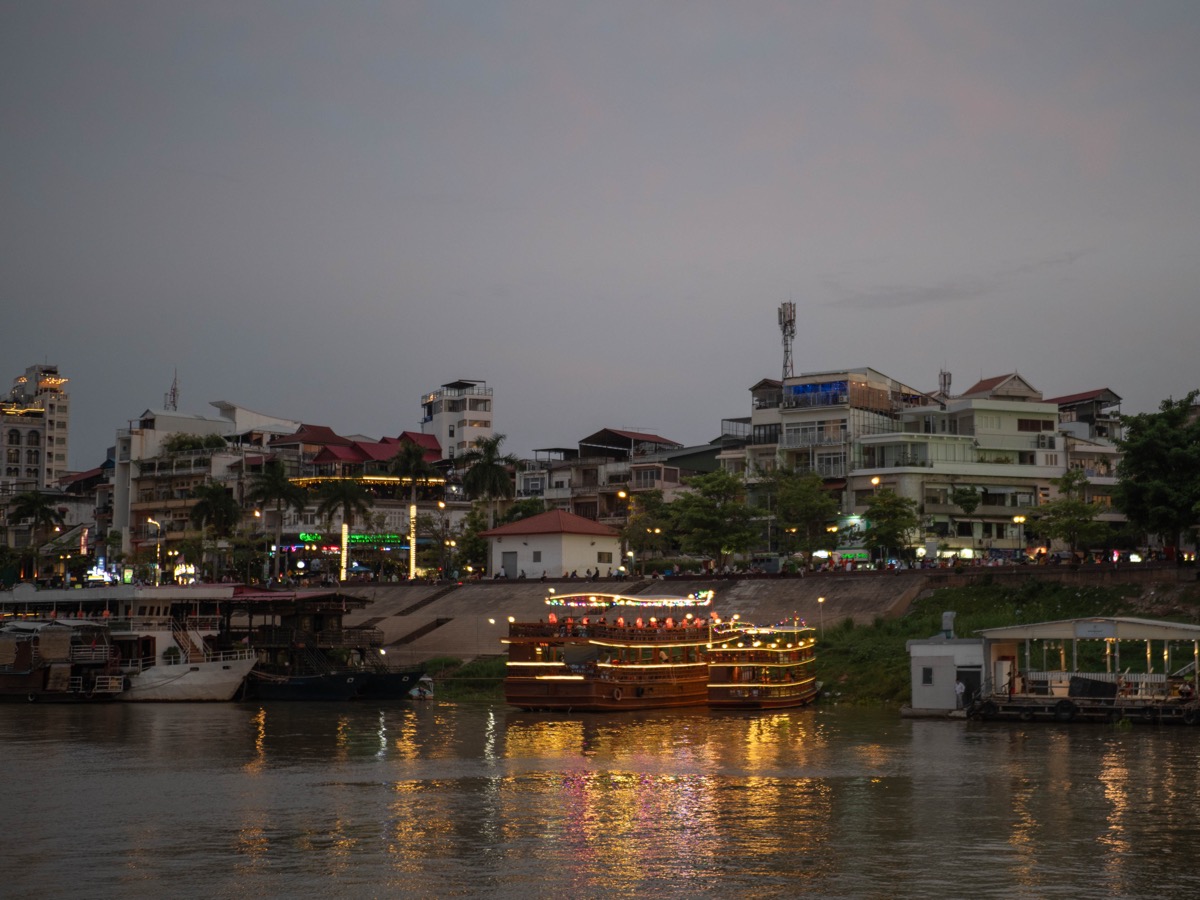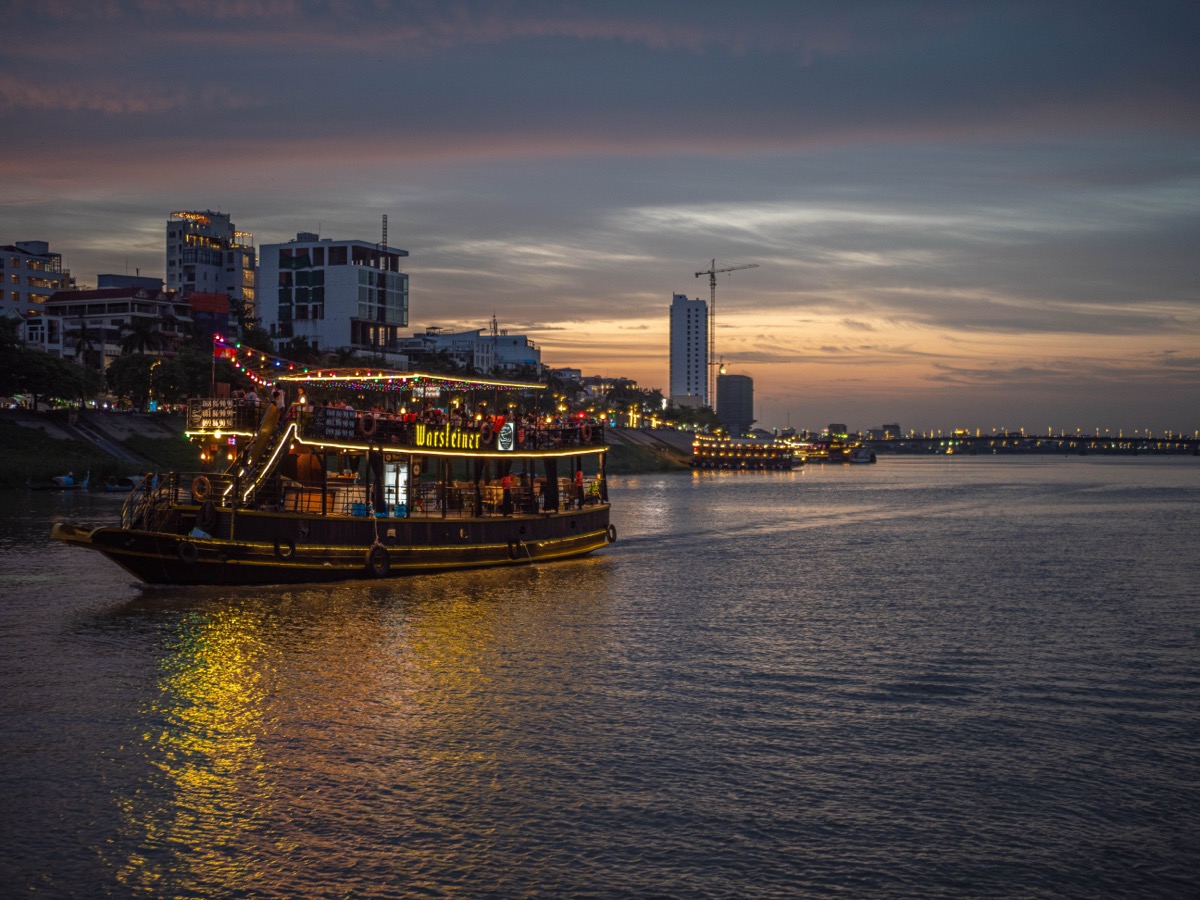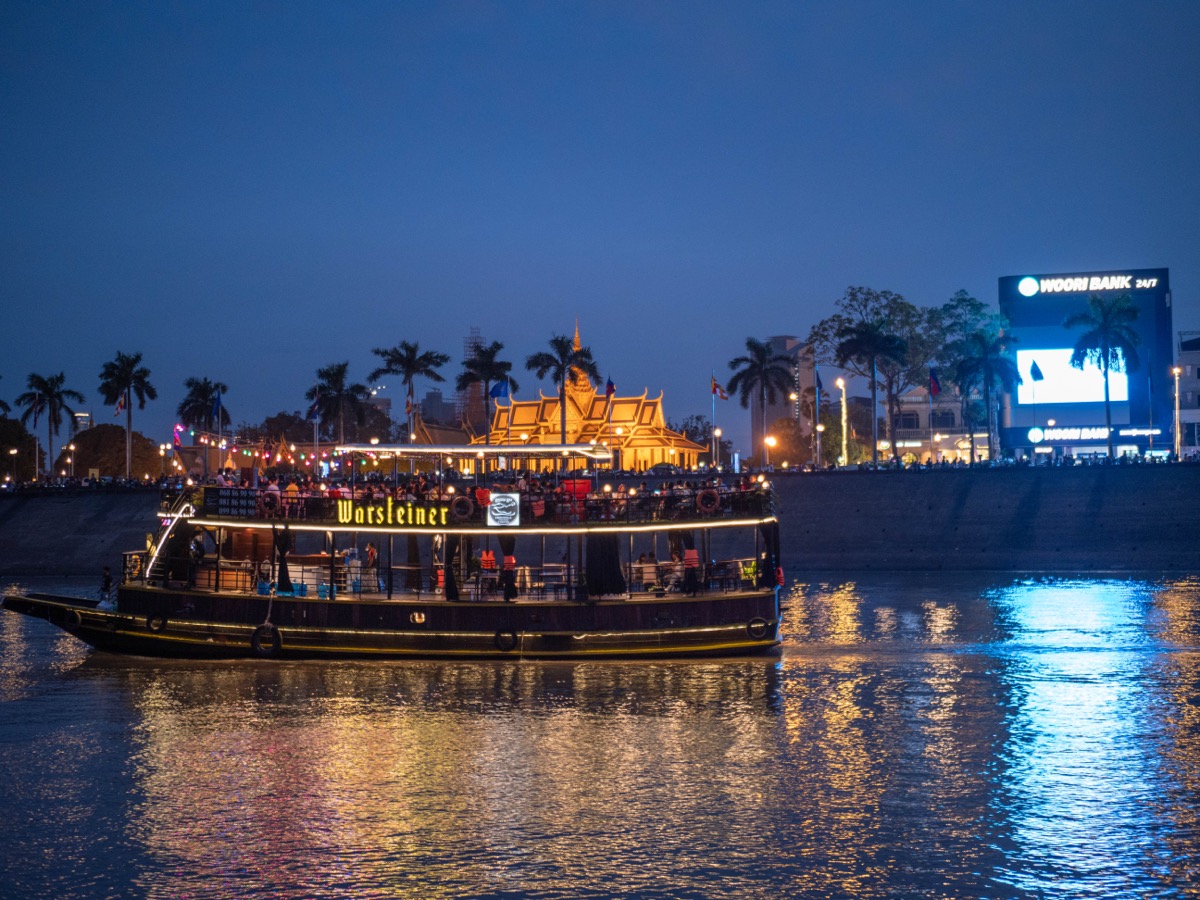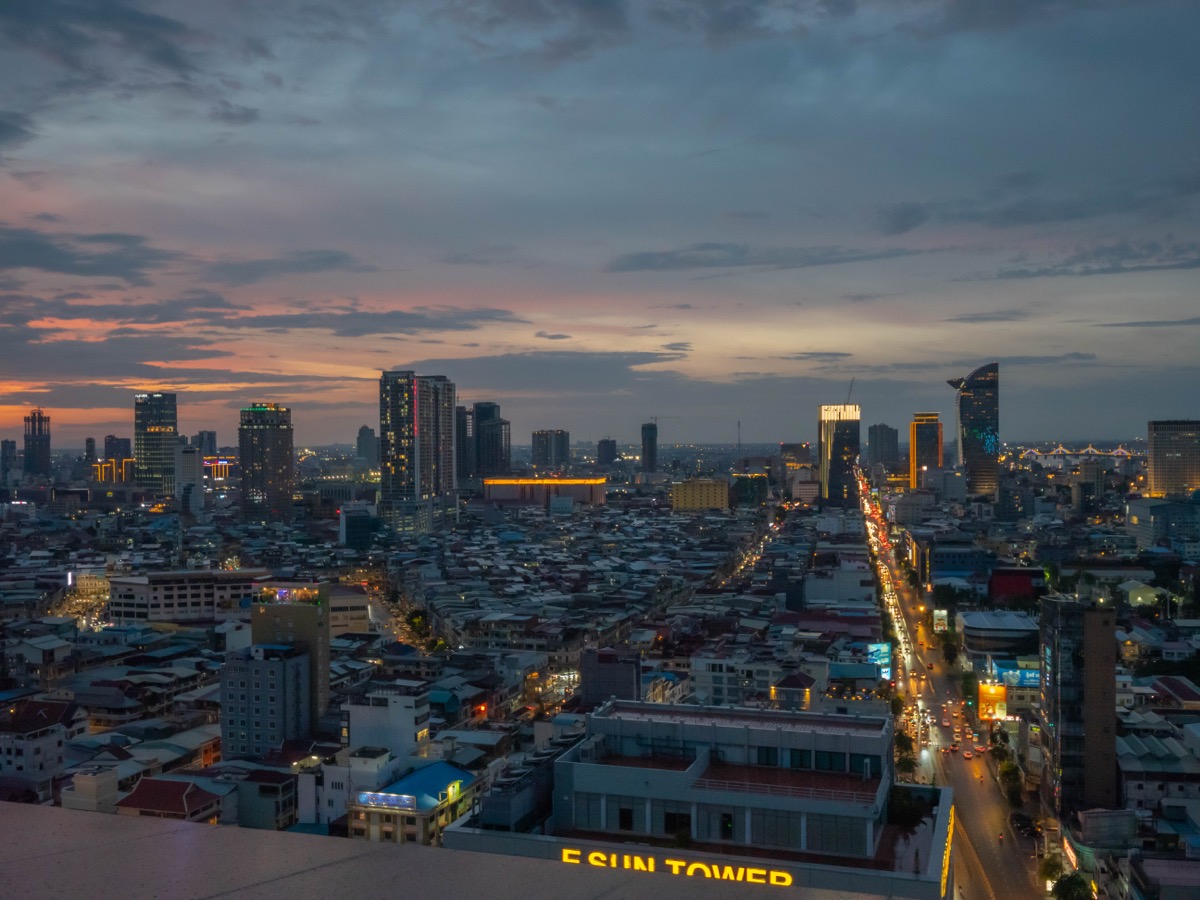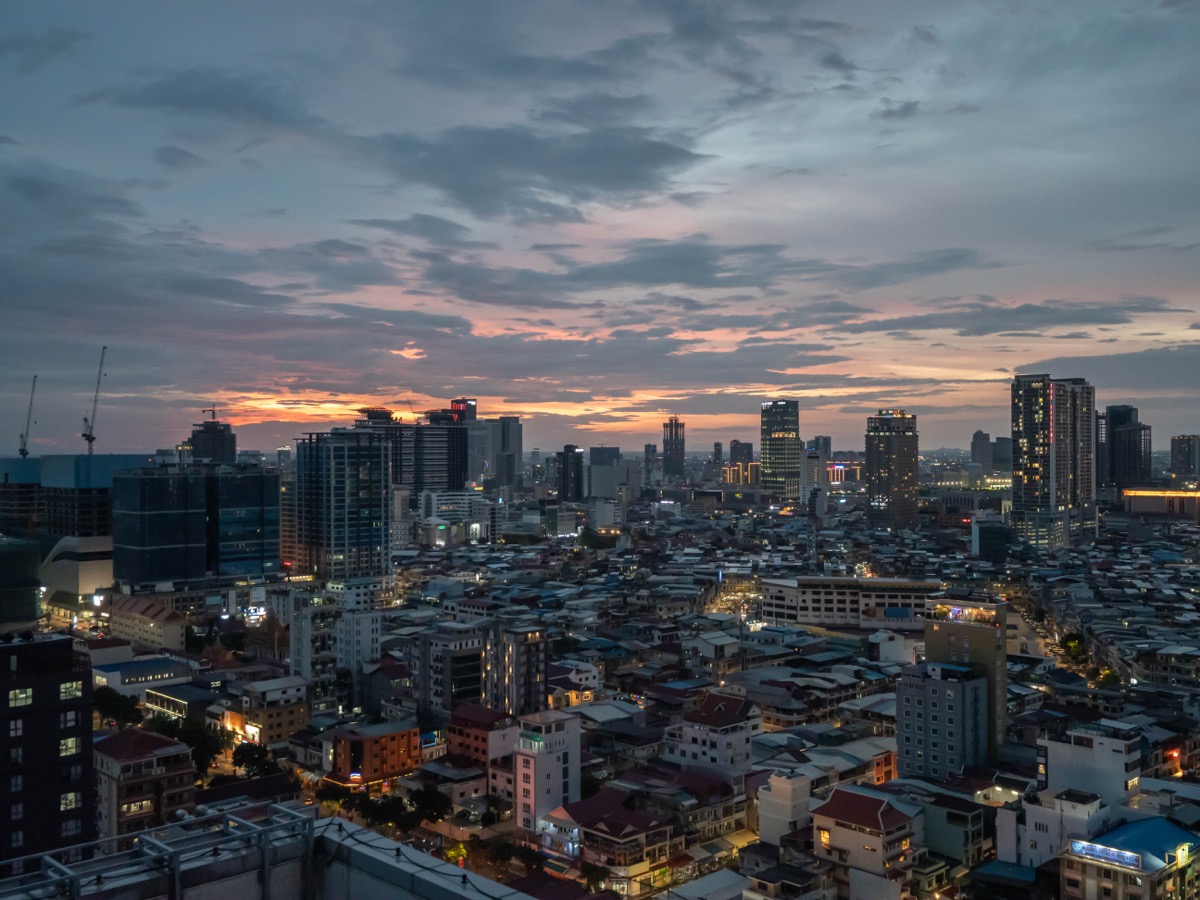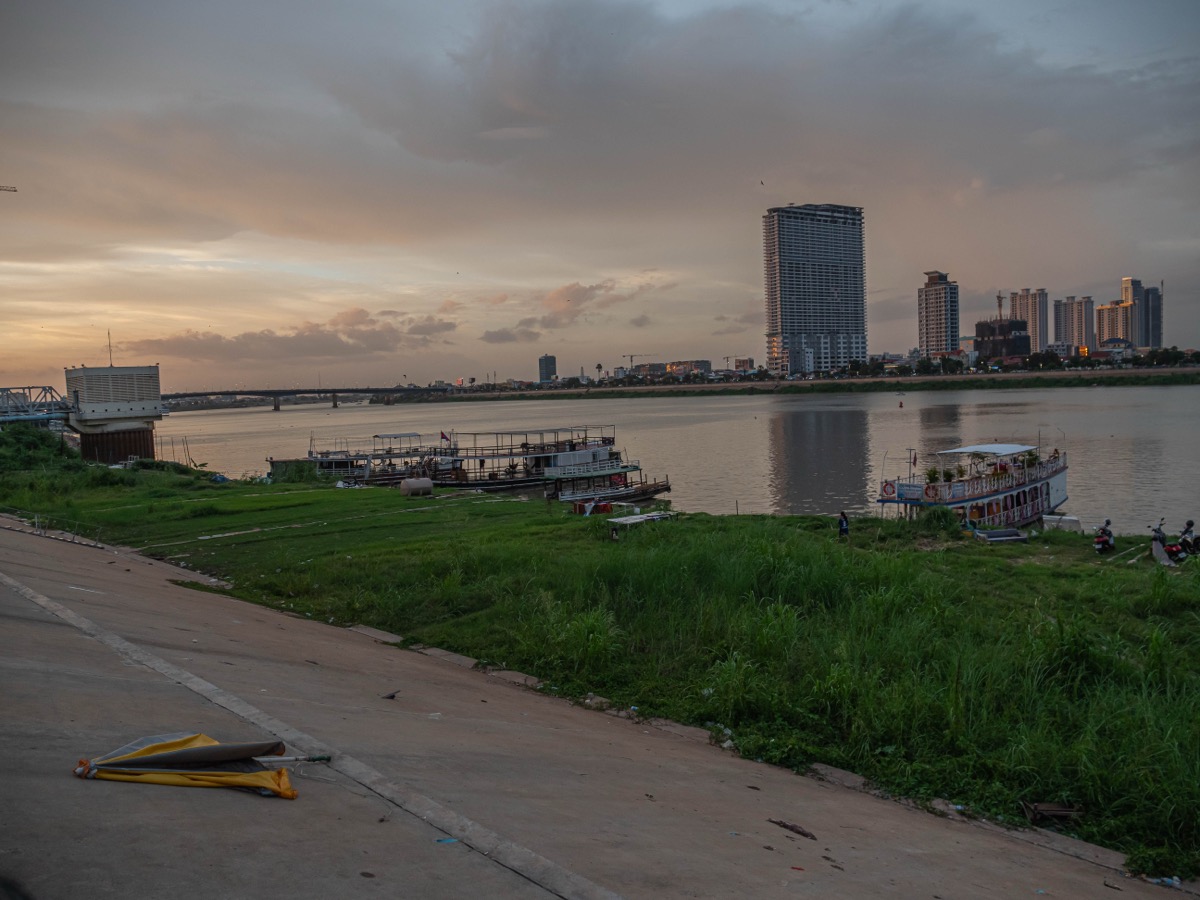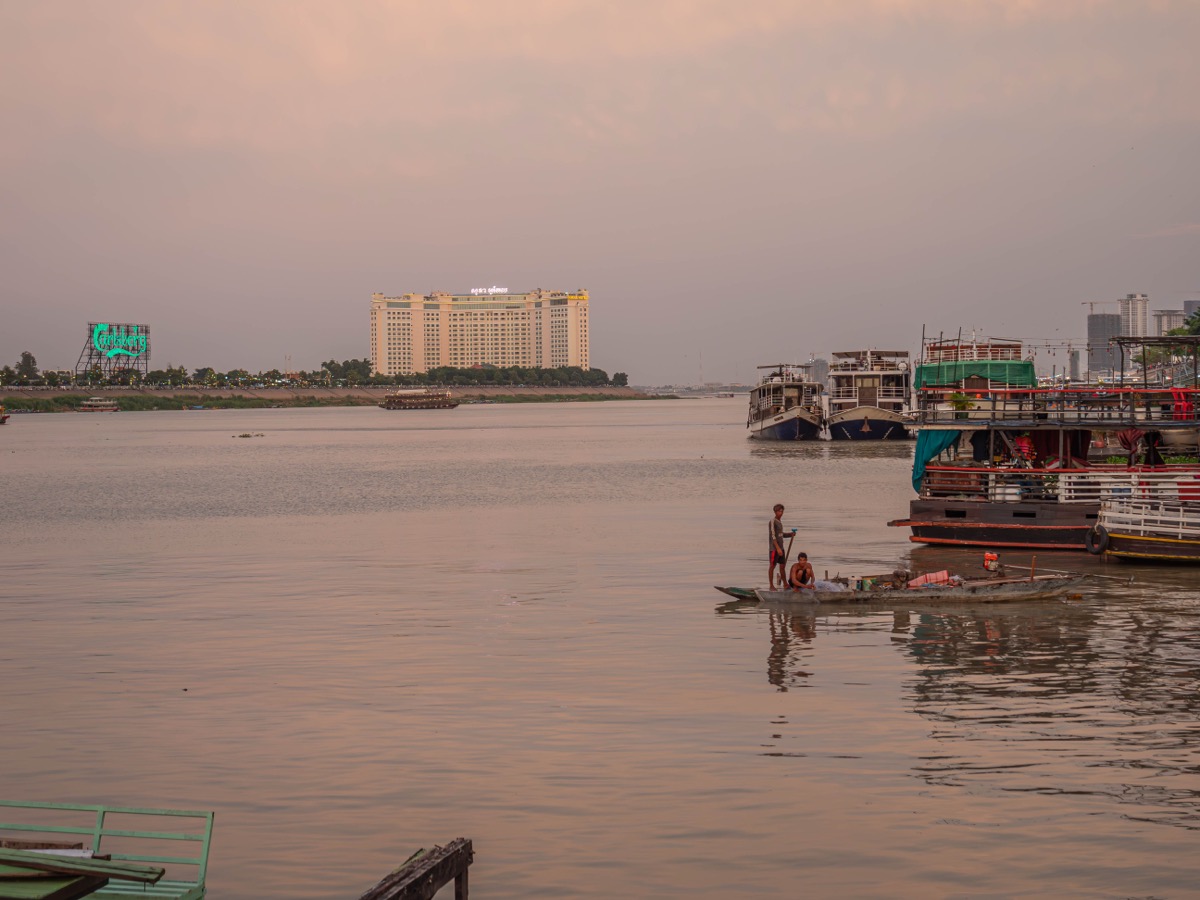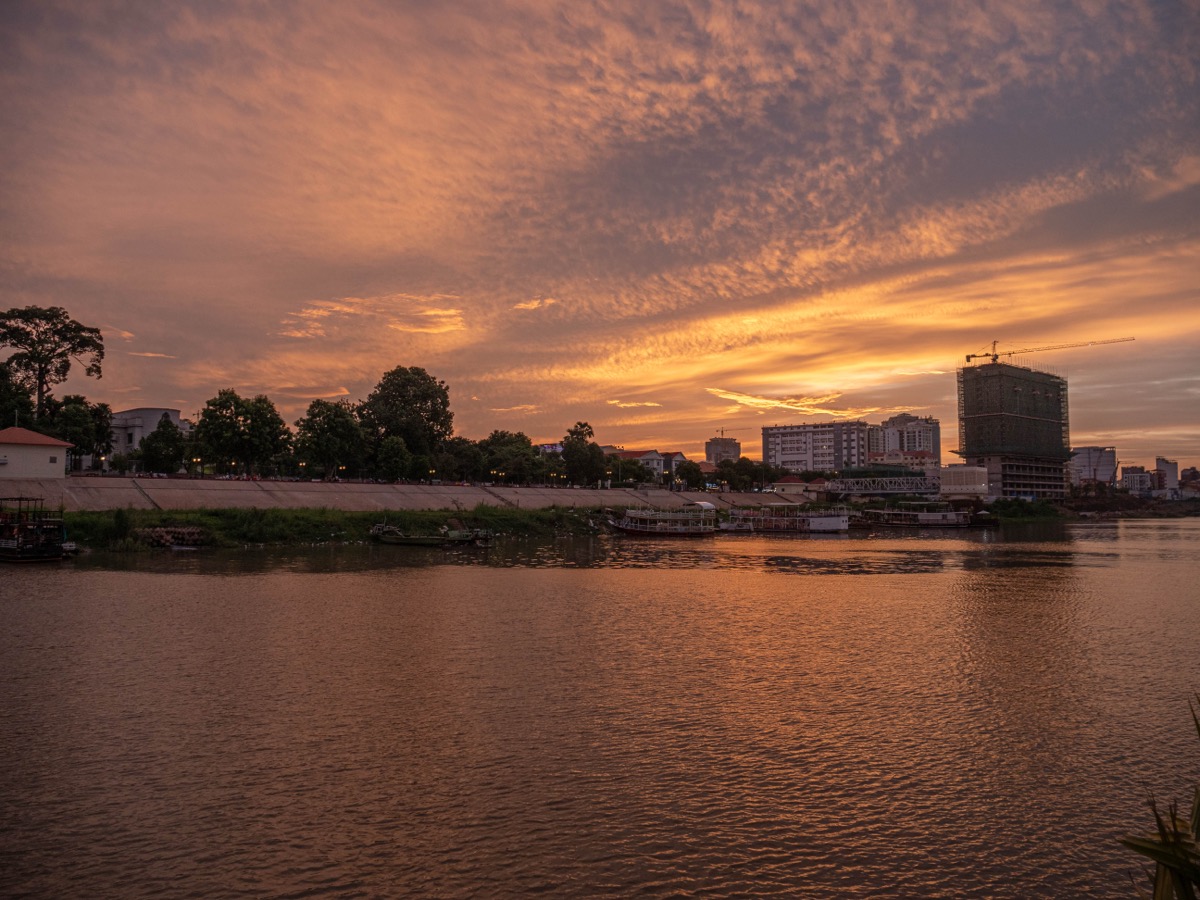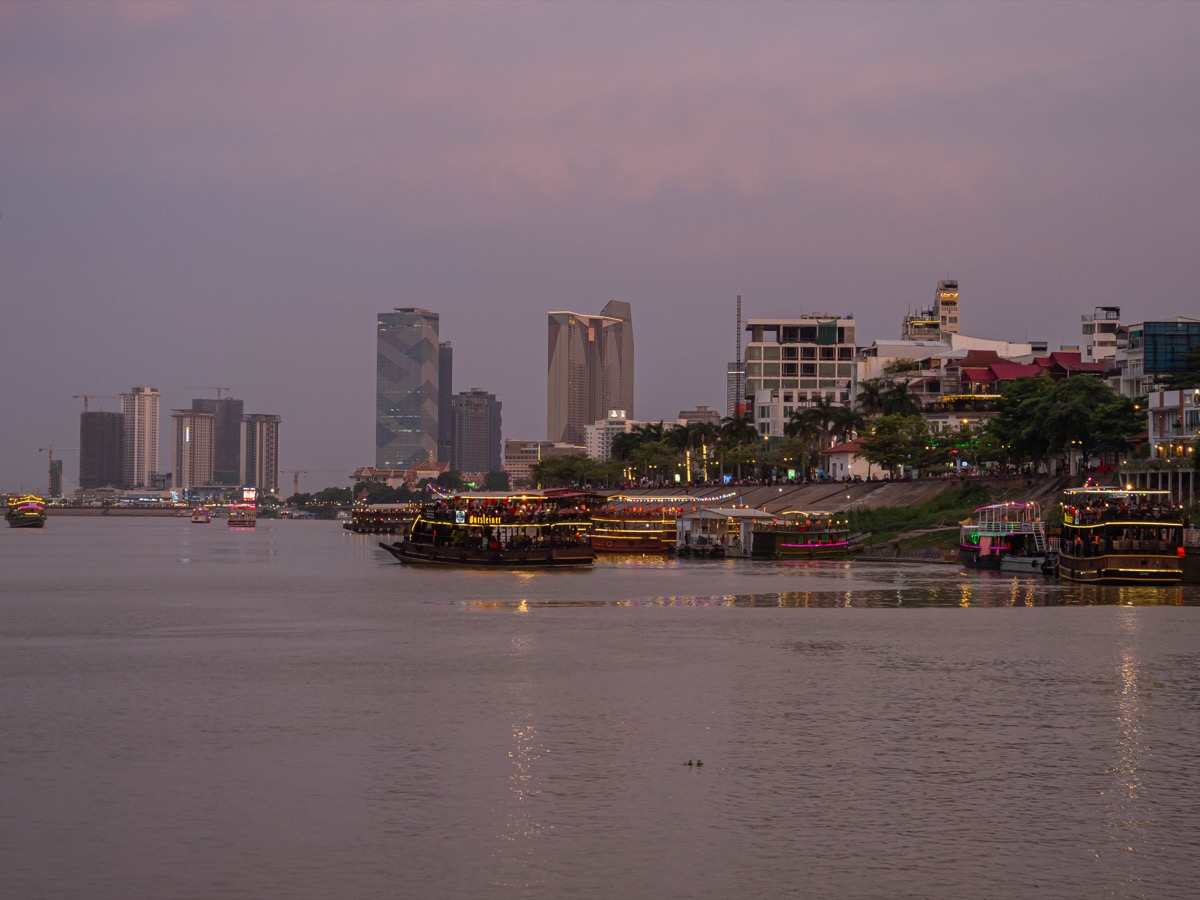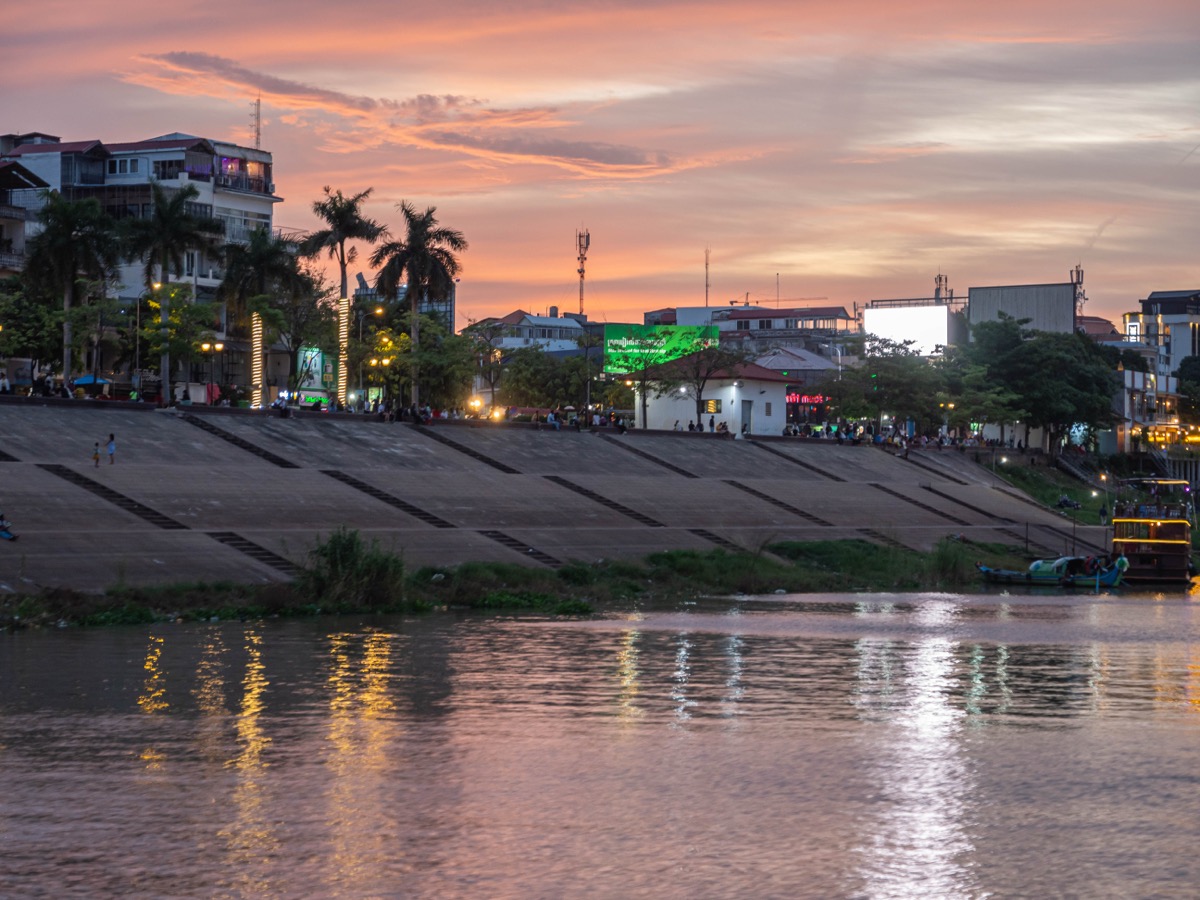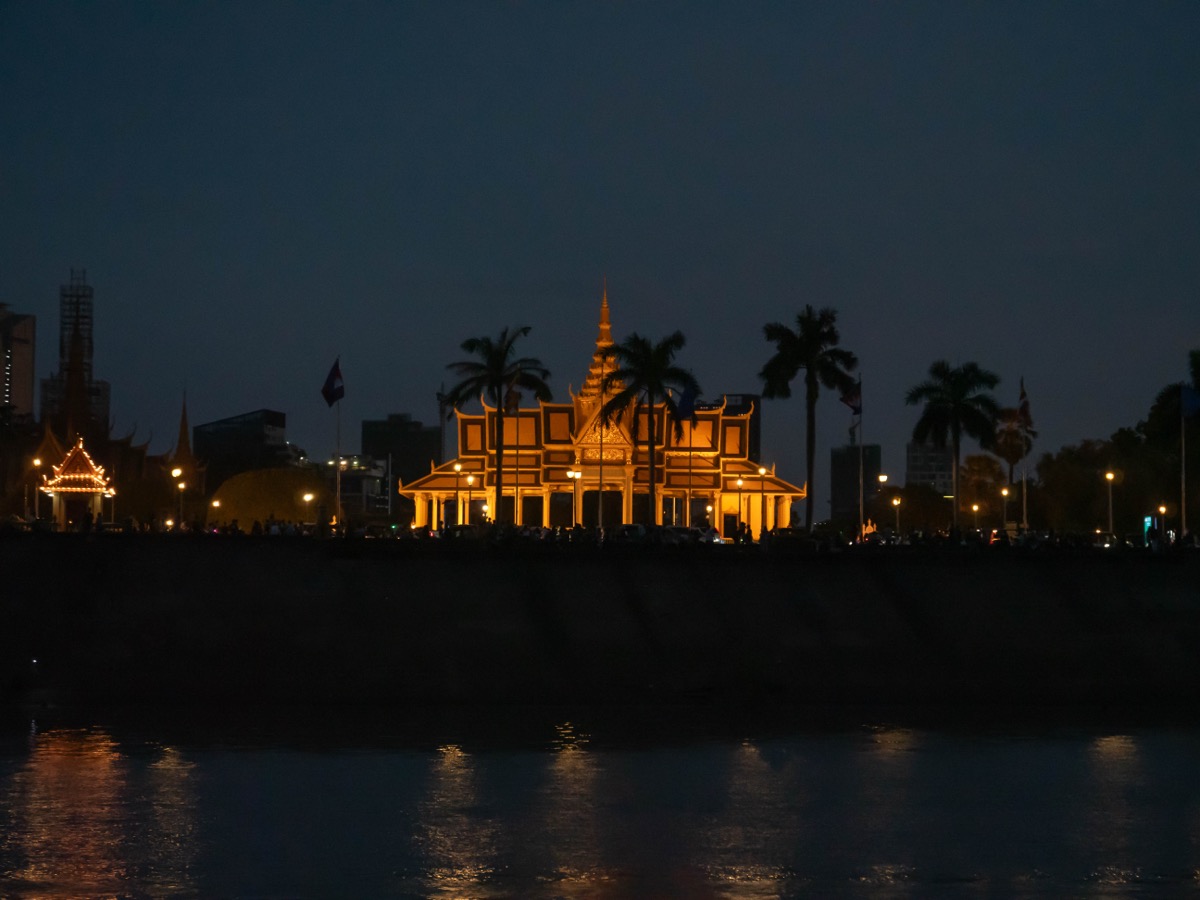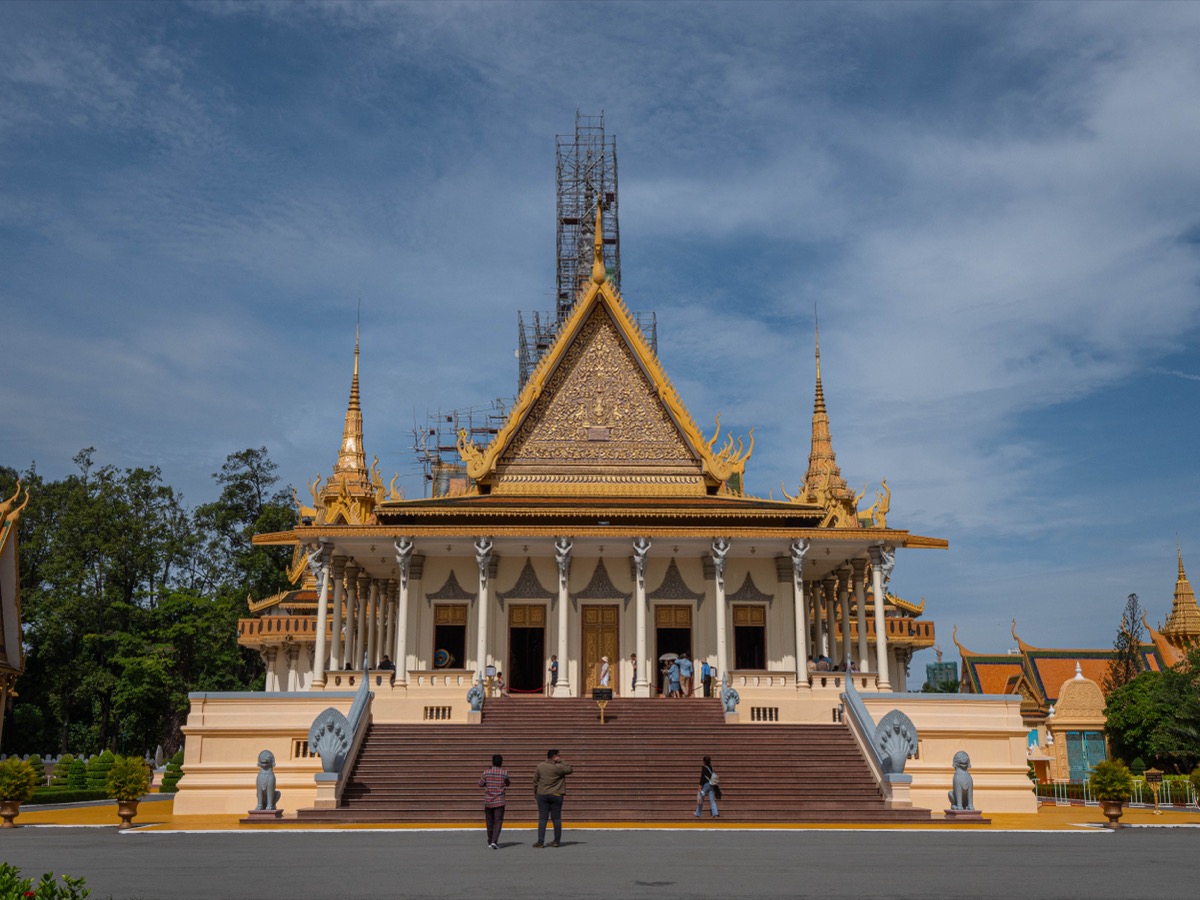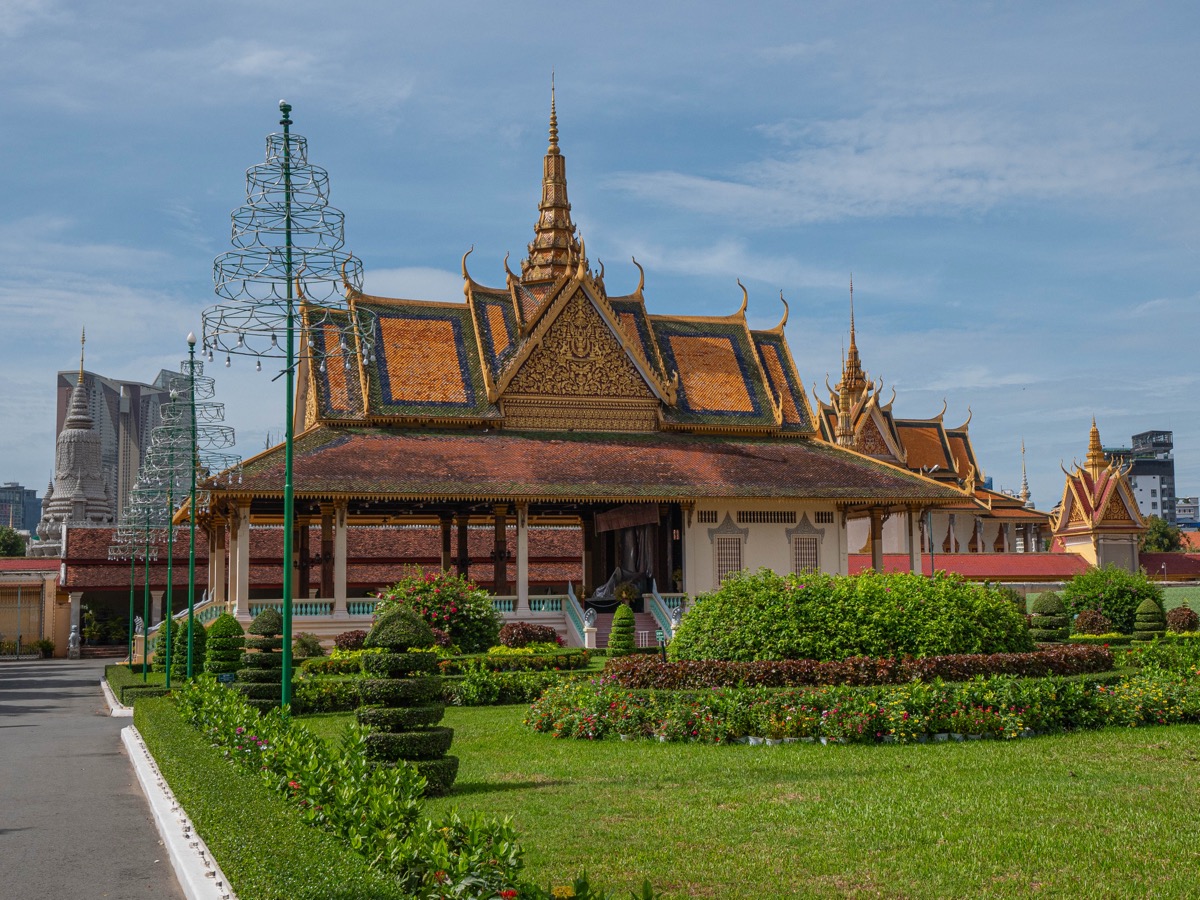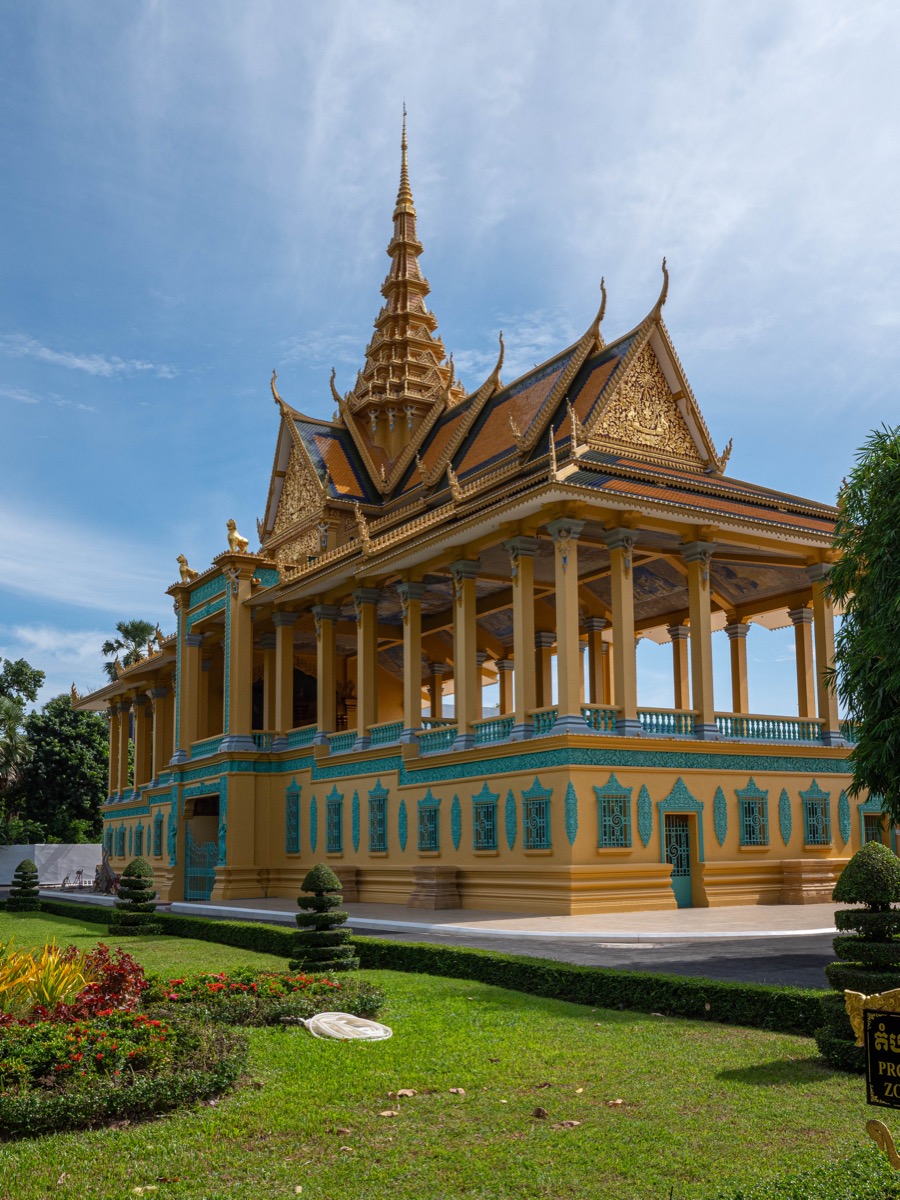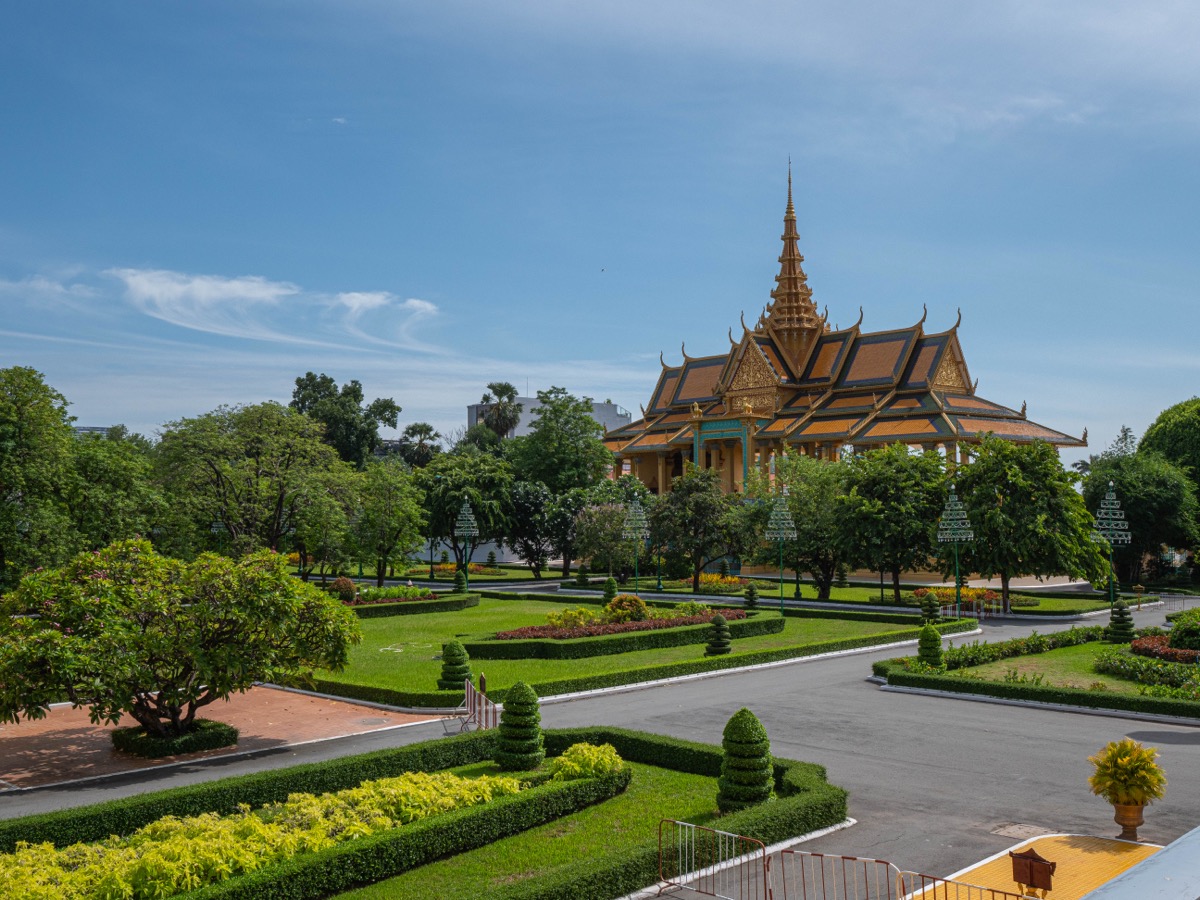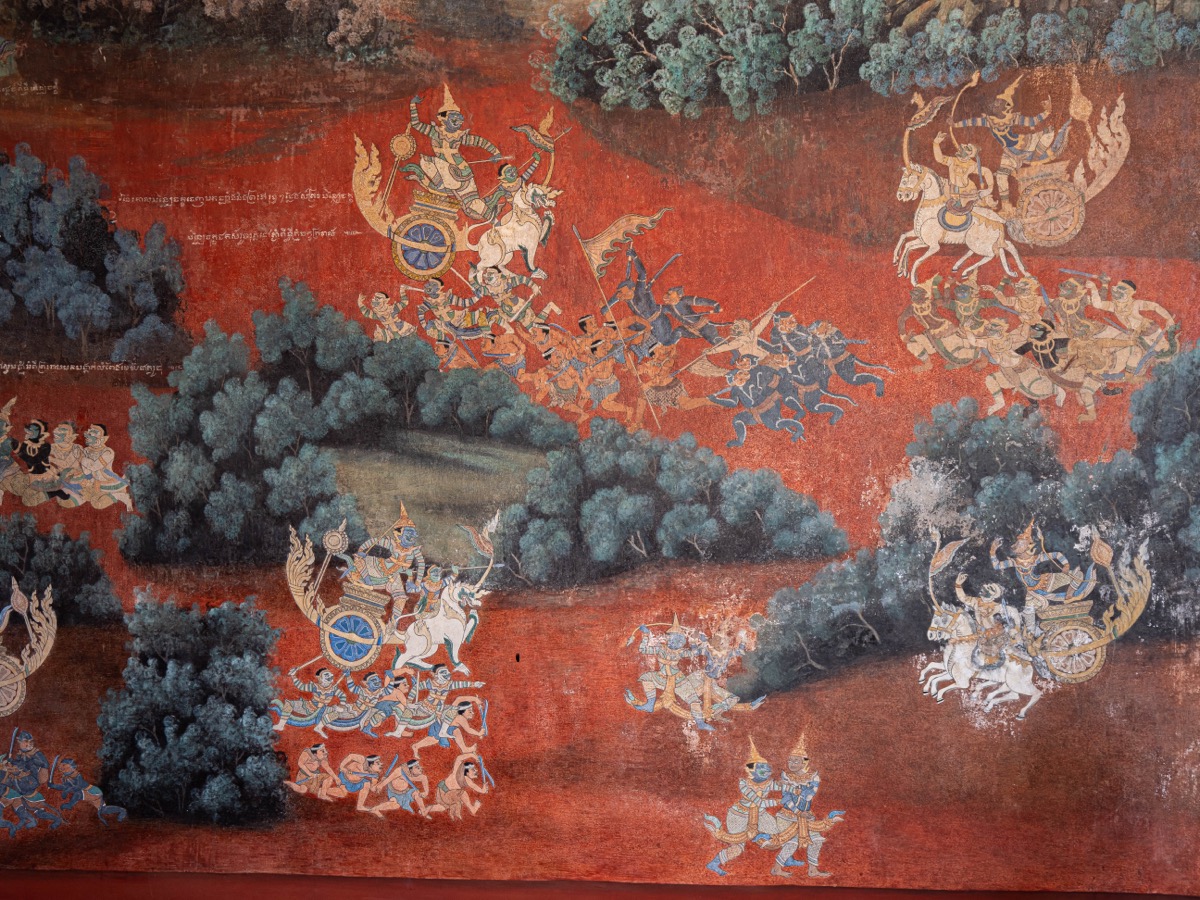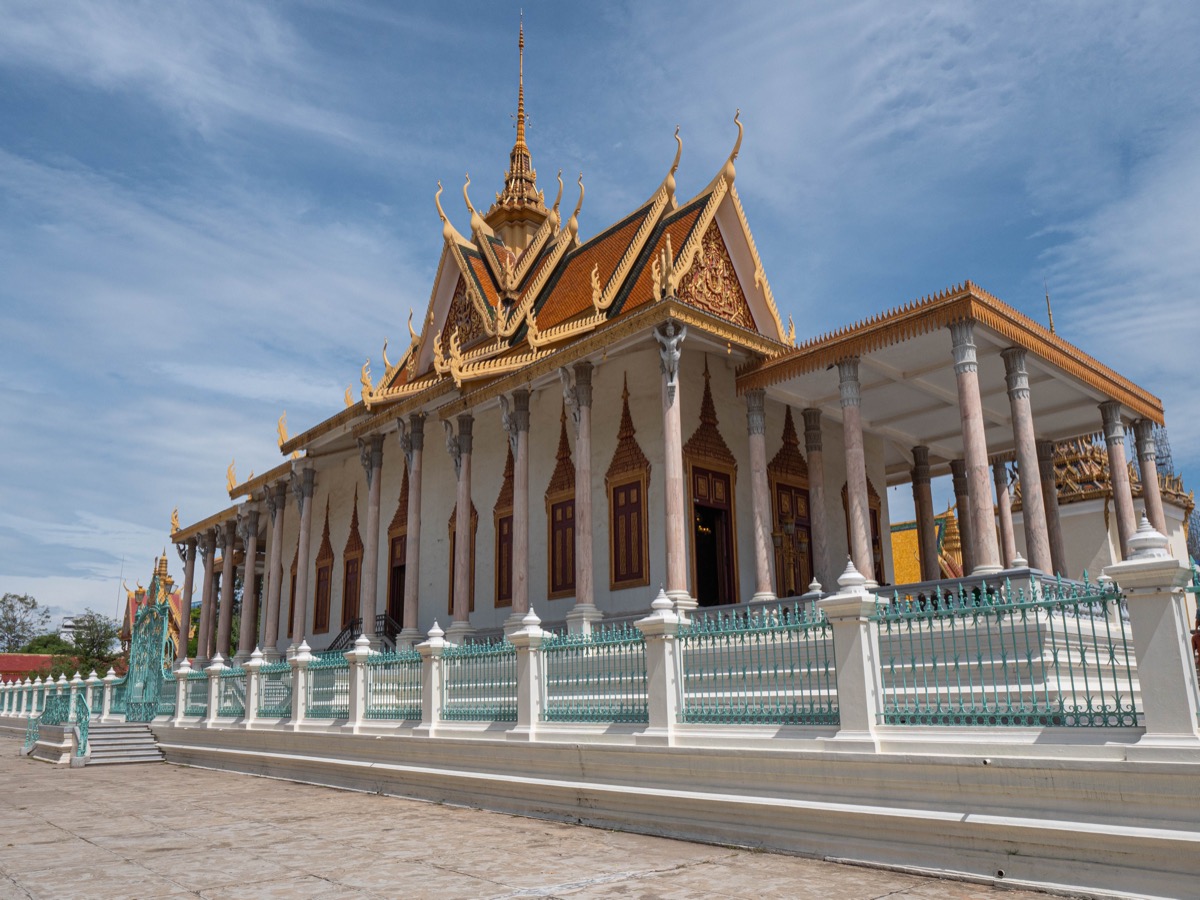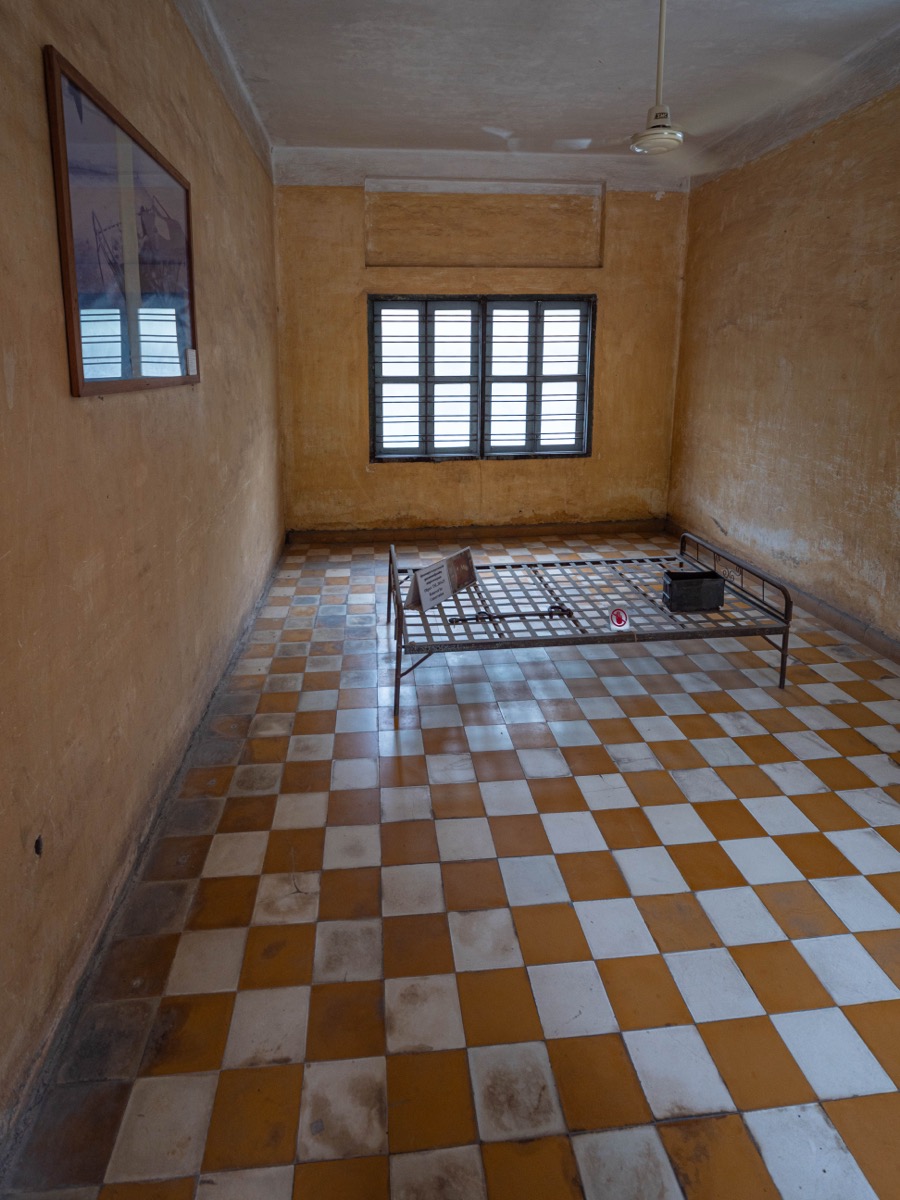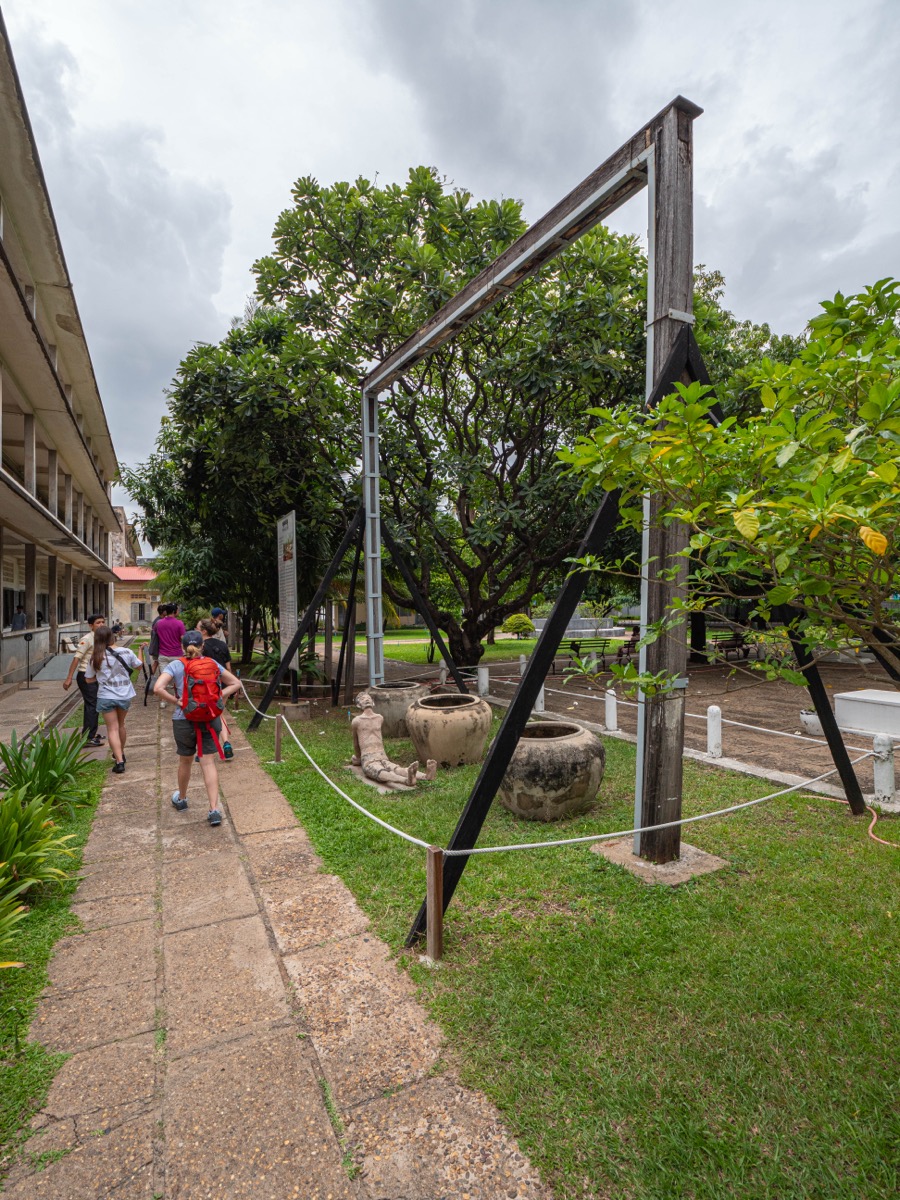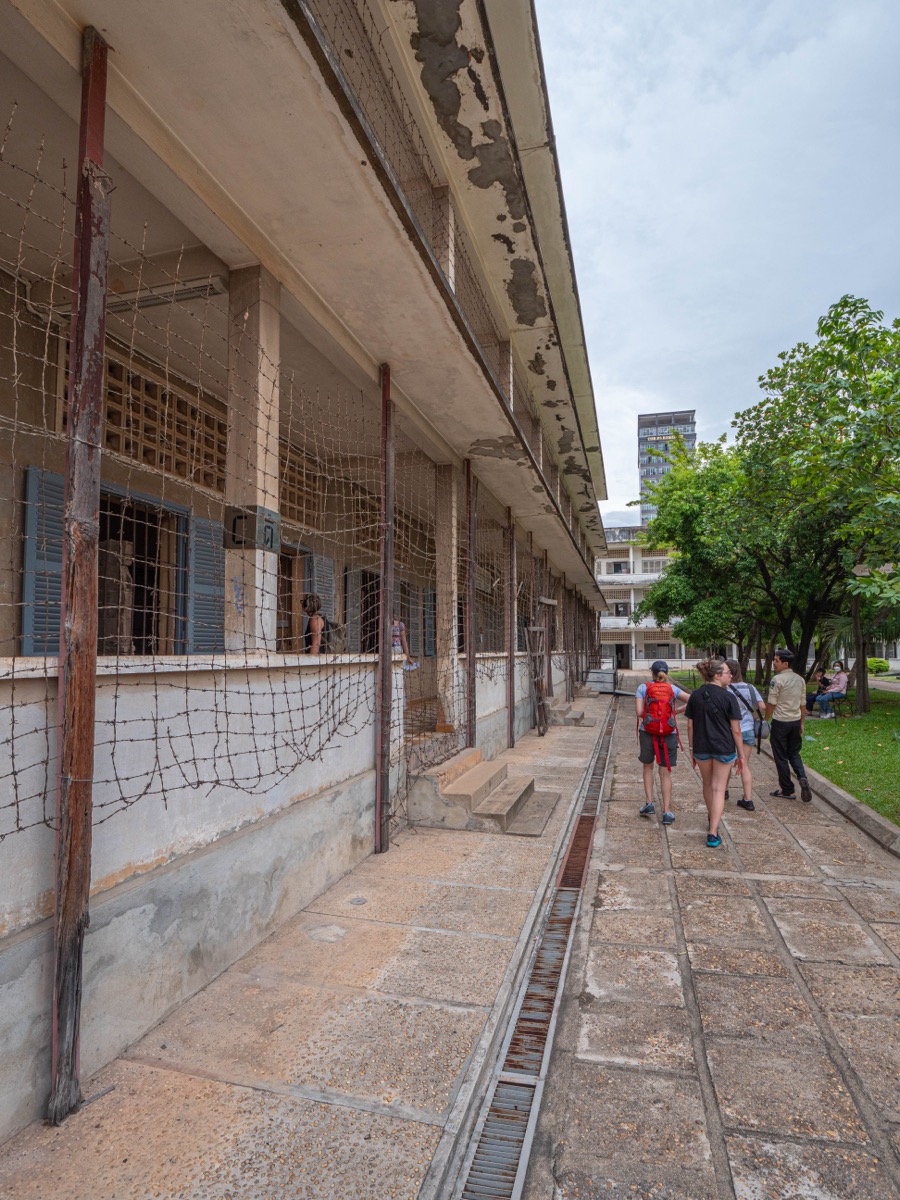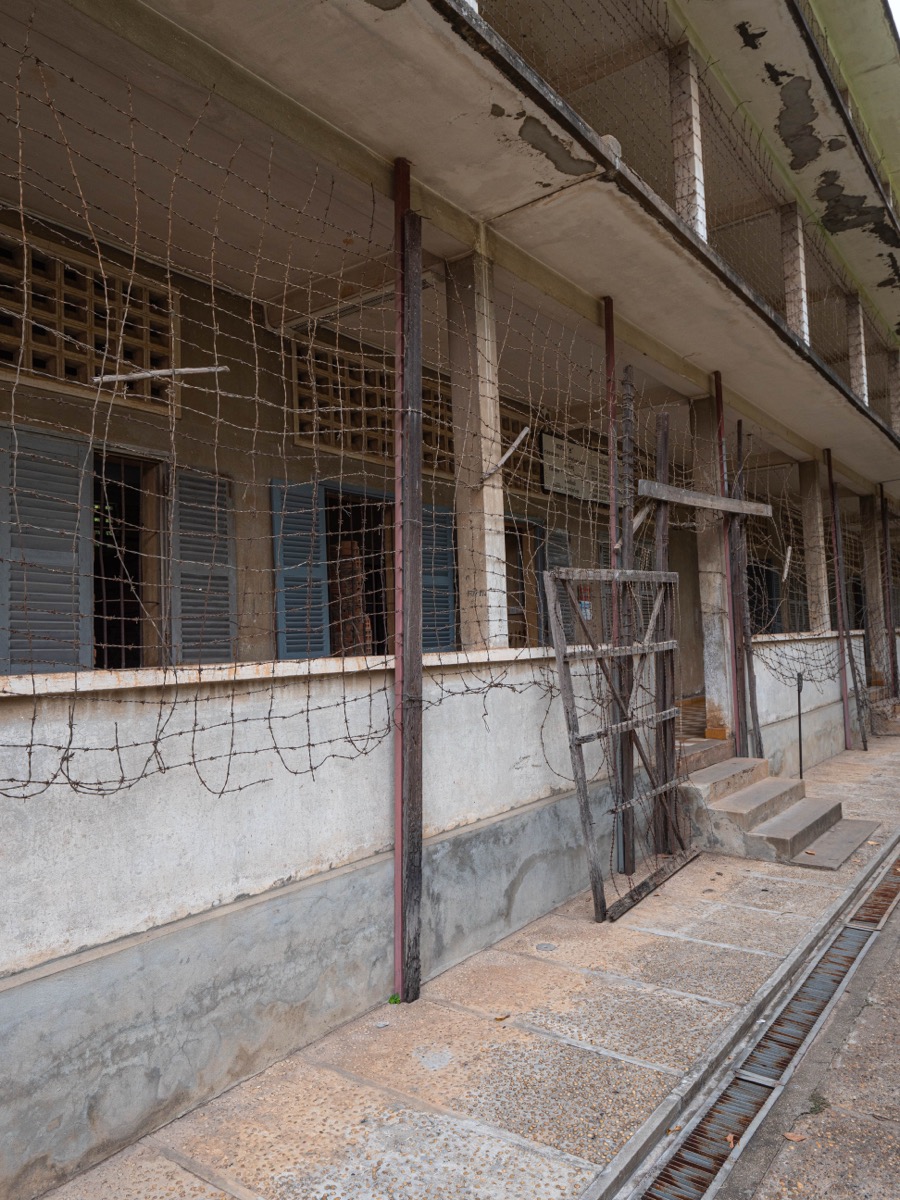Phnom Penh at the Confluence of the Tonlé Sap and the Mekong
Located at the intersection of the Mekong River, the Tonlé Sap, and the Bassac, Phnom Penh developed along the waterways. Once known as the “Pearl of Asia” during the French colonial period, it retains a charm that blends traditional architecture, colonial vestiges, and Asian modernity.
Today, the city is the political and economic capital of Cambodia, with a population exceeding two million.
The Tonlé Sap and the Mekong
The Tonlé Sap is a unique river in the world, reversing its flow twice a year due to the seasonal variations of the Mekong. During the rainy season, Mekong waters flow upstream into the Tonlé Sap lake, dramatically expanding it. In the dry season, the flow reverses, draining water back into the Mekong.
This phenomenon supports exceptional biodiversity and a local economy based on fishing and agriculture.
The Royal Palace
Symbolizing the Cambodian monarchy, the Royal Palace in Phnom Penh was built in 1866 after the capital moved from Oudong. The complex, still in use, houses the king’s residence as well as ceremonial buildings.
Highlights include:
- The Silver Pagoda, with floors paved by thousands of solid silver tiles.
- The royal throne and murals inspired by the Reamker, the Khmer version of the Ramayana.
The National Museum of Cambodia
Located near the Royal Palace, this museum inaugurated in 1920 is the largest in the country dedicated to Khmer art. It houses over 14,000 pieces spanning from prehistoric times through the Angkorian era.
Notable exhibits:
- Statues of Vishnu, Shiva, and Buddha.
- Khmer funerary and ritual objects.
- The museum building itself, inspired by traditional Khmer architecture.
Tuol Sleng (S-21), Memory of Genocide
The former Tuol Svay Prey High School, transformed into a prison by the Khmer Rouge regime, is now the Tuol Sleng Genocide Museum. Between 1976 and 1979, nearly 18,000 people were detained, tortured, and deported to the execution center at Choeung Ek.
The preserved rooms display:
- Photographs of prisoners.
- Isolation cells and torture instruments.
- Harrowing survivor testimonies.
Kang Kek Iew (Duch), Head of S-21
Born in 1942 as Kang Kek Iew, nicknamed Duch, he was the director of the S-21 prison under the Khmer Rouge regime. A former mathematics teacher who converted to Maoist ideology, he systematically organized the detention, interrogation, and elimination of thousands of prisoners, often without direct ties to the political power.
Arrested in 1999, he was tried by the Khmer Rouge Tribunal and sentenced to life imprisonment in 2012. He died in 2020.
Conclusion
Phnom Penh is a city of many facets: Buddhist spirituality, artistic splendor, and profound twentieth-century memory. It invites visitors to explore both peacefully and deeply, wandering along the river and reflecting on history.
Phnom Penh - ភ្នំពេញ
Phnom Penh is the capital of Cambodia. It is a bustling city where you feel the energy of rapid development, with construction sites everywhere. The country is clearly rebuilding after years of chaos following civil war and the uncertain times that followed.
Tourism has been opening up over recent years.
The city sits at the confluence of three rivers: the Tonlé Sap, the Tonlé Bassac, and the Mekong.
Founded in the 14th century, Phnom Penh is today the political, economic, and cultural center of the country. It hosts many historical and cultural sites, including the Royal Palace, a magnificent royal residence notable for its traditional Khmer architecture and stunning Emerald Buddha. It shares some similarities with Bangkok’s Grand Palace.
The National Museum allows visitors to appreciate invaluable collections of Khmer artifacts, reflecting the country’s rich and complex history.
It is hard not to be moved by the resilience of its people. One can visit emotionally powerful sites such as Tuol Sleng, also known as S-21, once a detention and torture center run by Kang Kek Iew, better known as Duch. For those wishing to continue visiting massacre sites, the Killing Fields lie outside the city. We chose not to go there.
In short, Phnom Penh is a captivating city offering a unique immersion into Cambodian culture, history, and contemporary life. It is a must-see destination for travelers seeking rich and memorable experiences in Southeast Asia.
Phnom Penh by night
The Royal Palace
Tuol Sleng (S-21): A Place of Khmer Rouge Horror Memory
The detention center Tuol Sleng, also known as S-21, was a security prison and interrogation center of the Khmer Rouge regime located in Phnom Penh. Established in 1976 in a former high school (Tuol Svay Prey High School), the facility was transformed by Pol Pot’s regime into a place of terror, torture, and execution.
During its operation (1976–1979), more than 18,000 people were detained. Most were falsely accused of being traitors, spies, or enemies of the revolution. After often coerced confessions under torture, prisoners were executed, usually at Choeung Ek (the “Killing Fields”) after transfer.
The center was led by Kang Kek Iew, alias Duch, one of the few high-ranking officials of the regime to be tried. He was found guilty of crimes against humanity by the Extraordinary Chambers in the Courts of Cambodia in 2010.
Today, Tuol Sleng is the Tuol Sleng Genocide Museum, a memorial site preserving cells, torture instruments, and photographic archives of prisoners, both adults and children.
I took very few photos of the site, focusing instead on the visit itself, which bears witness to the worst atrocities of the Khmer Rouge.
